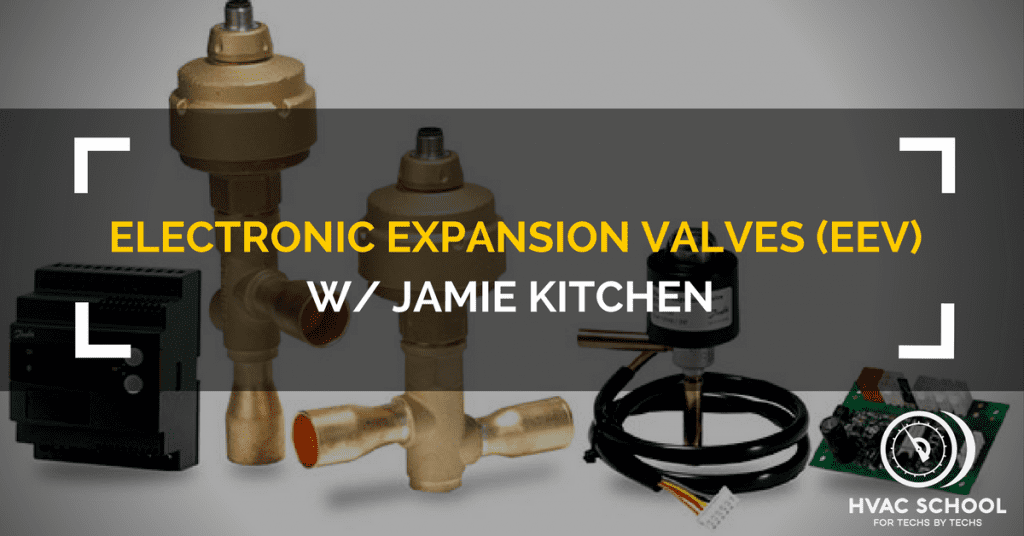Electronic Expansion Valves (EEV) w/ Jamie Kitchen (Podcast)

In today's podcast, Bryan and Jamie talk about the electronic expansion valve (EEV). Bryan and Jamie describe how EEVs work and the reason they exist. In the process, the hosts also review a wide range of metering devices. We made this podcast to address the rising demand for EEVs in the aftermarket element of the HVAC business.
Like the TXV, the EEV is a metering device. Metering devices create a pressure drop as refrigerant moves from the liquid line to the evaporator. Traditional refrigerators typically use capillary tube metering devices because they require a constant temperature and operate in a fixed temperature environment. However, TXVs are a bit more variable but open linearly and are dictated by a minimum stable superheat value. EEVs are also variable, but they can influence the superheat more directly; the superheat always exceeds the minimum stable superheat. Therefore, EEVs can increase efficiency by reducing the evaporator temperature and compression ratio by increasing saturation temperature.
Even though EEVs dominate the grocery refrigeration market because of their head pressure control, we can use them in residential HVAC too. The EEV controls superheat more precisely than a TXV, and their algorithms can maximize efficiency and fill the evaporator coil with the most refrigerant possible.
There are two types of EEVs: the pulse-width EEV and the stepper motor EEV. The stepper motor has “steps” to modulate the degree to which it opens or closes. The pulse-width EEV either opens or closes, much like a solenoid valve.
Bryan and Jamie also discuss:
- Hot pull down
- Ideal compression ratios and efficiency
- Minimum stable superheat
- Compressor cooling accessories
- Downsides of oversizing TXVs
- Evaporator superheat vs. suction superheat
- Technological advancements for EEVs, especially for Danfoss EEVs
- Less obvious advantages of EEVs over TXVs
Author:









Comments
To leave a comment, you need to log in.
Log In